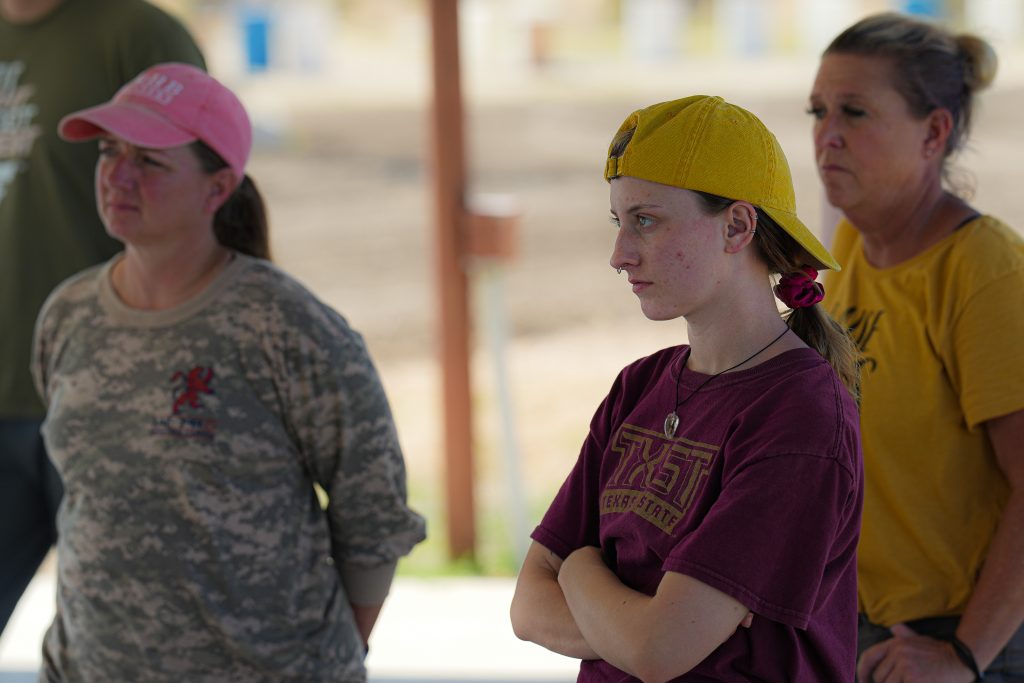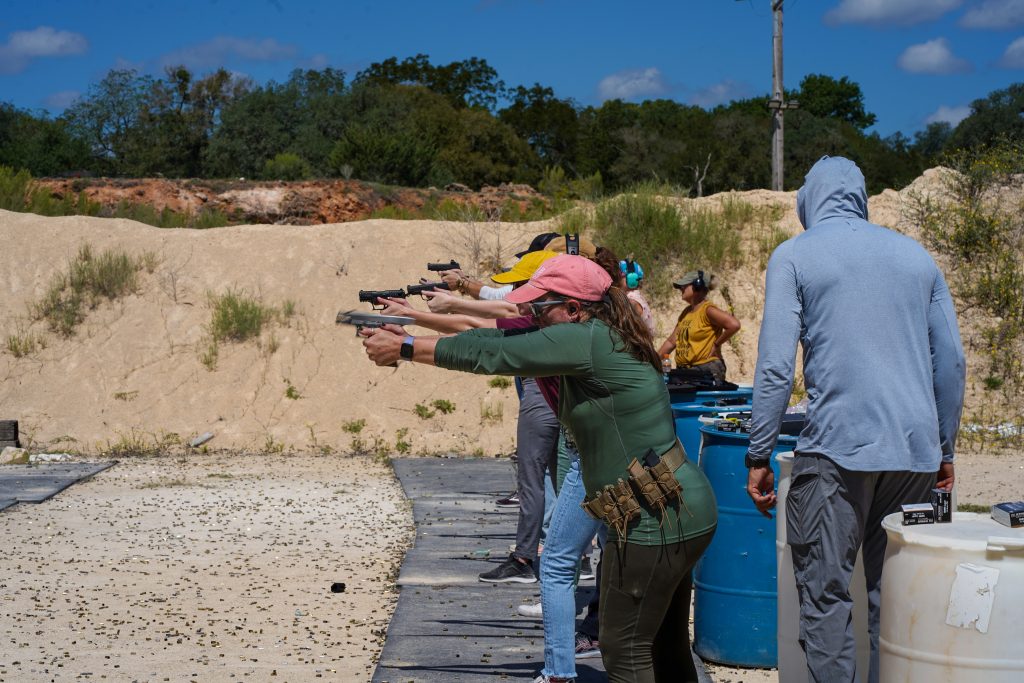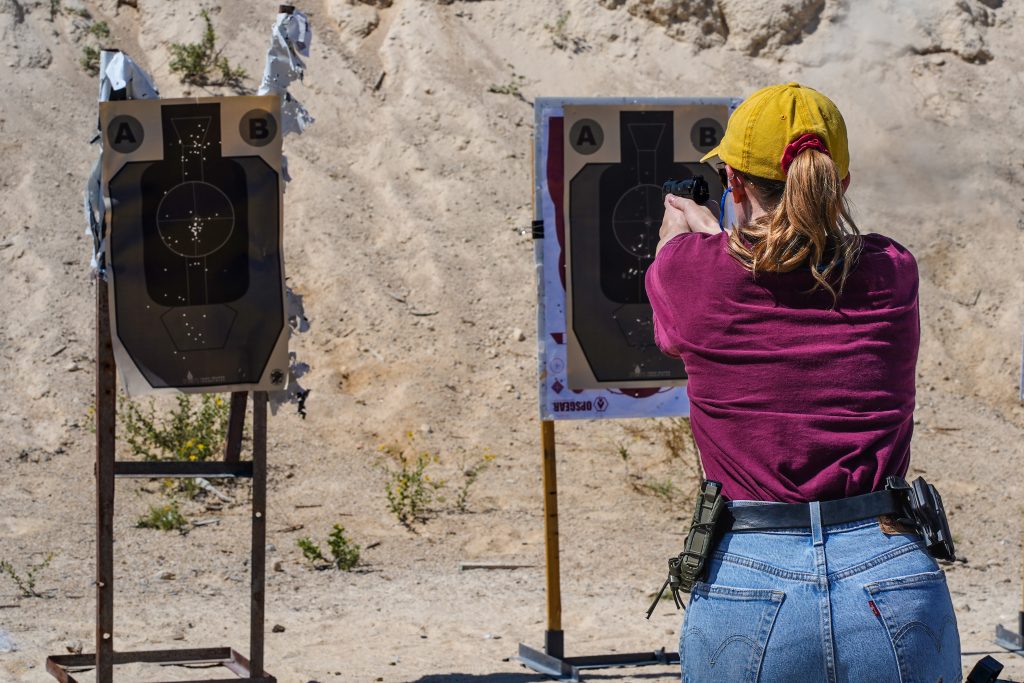Immersion is The Only Way I am Gonna Learn Spanish…. And to Fight. By Christun Erwin.
By Christun Erwin.
During my senior year in high school my parents decided I was going to share my room with our new foreign exchange student, Fabia from Mexico (tagging you in this girl!). I was the oldest and the only girl of four kids at the time. What was possibly devastating to this moody and selfish teen very quickly turned into one of the sweetest and longer lasting friendships of my life. No, I didn’t learn a lick of Spanish through this, we will get to that later, but she was thrown into a large family with loud, yammering, dirty boys (she only had three sisters) and her rather stunted English became stellar within just a few weeks.
Outside of safe places to train, something I often get asked is “What is the best martial art for self-defense?” This question is so damn loaded, and beliefs run incredibly hot on this topic so to keep this simple I am offering mine. And, because I have sloughed through this debate multiple times, I will say this with the most love possible, I am not gonna care about anyone else’s opinion while writing this. Also not likely to engage in debate either.



The whole point is fully comprehending the goal. Will certain traditional martial arts get you there? Possibly, but how long will it take and what are they putting their emphasis on? Are you spending 75% of your time memorizing katas (unpopular opinion loading, but #thatsart) and the rest learning specific moves? If that’s the case you are not being immersed into actual action, you are just memorizing movement.
If I am being honest here, I have dealt with and have seen this failure break down multiple times. Having a background in karate I have experienced this myself. You are not going to be able to pull off multi-faceted moves under stress. That brings us to the consideration that you are not being conditioned in the fastest way possible to act and comprehend violence.
And that is the point of learning self-defense. For self-defense and nothing else, where are you going to be trained to react efficiently in the fastest way possible without cutting corners?
This is not saying certain martial arts don’t have their merits. But, if the goal is to prepare to be able to protect oneself in the most expedient way, we need to be looking at the ones that are immersing their actions under pressure. Addressing all aspects of the fight from freeze responses, to drawing good boundaries in your life, to the reality that you may end up rolling around on the ground in glass and piss.
This may ruffle some feathers, but one of my biggest pet peeves is an 80 pound, 14-year-old girl getting her black belt in Taekwondo and then basically she and everyone around her thinks she is fully capable of defending herself without ever understanding just how much size matters. It takes nothing for an average man to bicep curl her and throw her on the ground a place where she has learned nothing because she was told she wouldn’t need it. Her flurry of pretty punches and kicks are just an irritant to a large male intent on getting what he wants. And we aren’t even addressing prefight boundary setting and learning how to create space.
I love MMA.
I belong to an MMA gym and in that place I am surrounded by people in peak physical condition. People able to dodge punches and take hits and bend your arm in ways it’s not meant to bend. This is an aspect that I would say trains in a way to act. Not learning moves but movement. That being said, MMA alone is sport and whereas you are learning to fight adrenal responses, conquer fear, the unequal iniative part is not addressed. Both parties choose to spar, both parties are amped up and ready to go when they step in that cage.
It’s the same with jiu jitsu. Do you need to know groundwork? Absolutely. Especially for smaller people and it is the one I recommend with equal aplomb to the next one I am going to mention, but again, a roll is not a fight. You are both choosing to be there and there are rules of engagement. With sport there are limits, you train for those rules… is that going to get you closer to understanding violence? Absolutely, and more than most, but you must train for what your goal is.
I have been in fight camp training for an MMA strawweight fight for about 7 weeks now. In that time I have punched out mitt combos until my arms fell off. Then spent equal times rolling working towards submissions. I am sparring with friends who have no issues punching me in the face. I am not working against someone trying to rape me. The amount of force necessary is less. I am not working on my knife/gun draw during fight camp and my stance is different. Why? Because I am not preparing for the best ways to escape the cage. My goal is to stay IN the fight; my goal in the real world is to survive and do what it takes to get away. Preparation for those look drastically different.
What do I recommend? It is going to be a blanket answer of two. And to quote one of my favorite instructors Ryan Hoover, “It depends.”
So here we go…. Krav Maga and Brazilian Jiu Jitsu.
Here is the worst part, this is extremely incumbent on where you live and what kind of gym it is. There are some crappy gyms out there with crappy instructors. It is why I have a page on my website completely dedicated to safe places for people to train. They are ones I have personally visited, know the instructors, or have trained under significantly. When I travel, I try out new ones so that I can post them on my site.
BJJ is going to be the one that is going to address the inevitable for a smaller person that could end up engaged physically with a larger stronger person, and that’s going to the ground. However even before that, the variable of your surroundings for getting there i.e. tripping, walls, falling over furniture, etc. it’s all in there, so the necessity of ground defense is imperative. The Gracie’s have an incredible women’s self-defense program right now that I am truly impressed with. If that’s local to you, that’s an option.
And then Krav Maga because it is going to address the freeze responses among other valuable things associated with predators. You are put immediately into some sort of pressure testing ; amped up to feel how something works.
Krav Maga is specifically an Israeli self-defense program. Its translation from Hebrew to English is roughly, “close quarters fighting.” Which is, you know, an actual fight. Funny story, this is the second draft because I sent this over to Ron with Tactical Fitness Austin and he told me I was wrong; that it translates to “Contact combat.” Which I feel is like basically the same thing. But, I also feel it is not smart to argue with an Israeli about his own language; never ends well…..
So back to “Contact Combat,” it is rooted in the ugly parts of violence where there are no rules. In my opinion this gets you closer to not making hesitations in-fight. KM addresses weapon disarmament as well as multiple attackers’ scenarios. As I said before there are other martial arts that address violence under pressure like kickboxing, boxing, and Muay Thai (don’t freak out if I didn’t name yours here.) They do help overcome the fear factor shebang of going toe to toe with somebody, but they are limited in what they are addressing because again, you have to follow their rules. Can’t really poke em in the eye legally in the ring…
This past week I was training at Jacksonville Muay Thai. I had an interesting conversation with the owner Gyles about the difference in necessity of monkey grip (closed thumb) versus what I call barbie hands (open thumb). A clinch in Muay Thai uses monkey grip for maneuvering an opponent. In a more self-defense aspect, there are more variables; a more precise need for barbie hands/open thumbs In order to have better control over weapons, clothes etc.
So to reach my zenith humble opinion point of all of this is and to segue it into my first paragraph about my friend and foreign exchange student Fabia…
If you are spending all your time learning katas, unopposed moves, and point sparring, it is going to be more difficult and moretime-consumingg to understand real violence. And how ugly and fast it really is. You are not being immersed and you are not putting to test your skills under adrenaline.
With jui jitsu/grappling you are rolling physically on the ground with another person up close and personal. You are breathing their air getting a feel of pressure, understanding, and an opposing person’s actual strength. You learn to get mildly comfortable with feeling trapped. Thus able to be calmer to work through those problems to be victorious. In Krav Maga you are immersed into violence and pressure testing what you have learned. In my opinion those two are like living in a country where no one speaks your language. You learn theirs fast to buy beer for survival. The others will possibly get you there but more like Rosetta Stone.
Translation of this whole article: There’s no way I’m learning Spanish unless I move in with Fabia.
